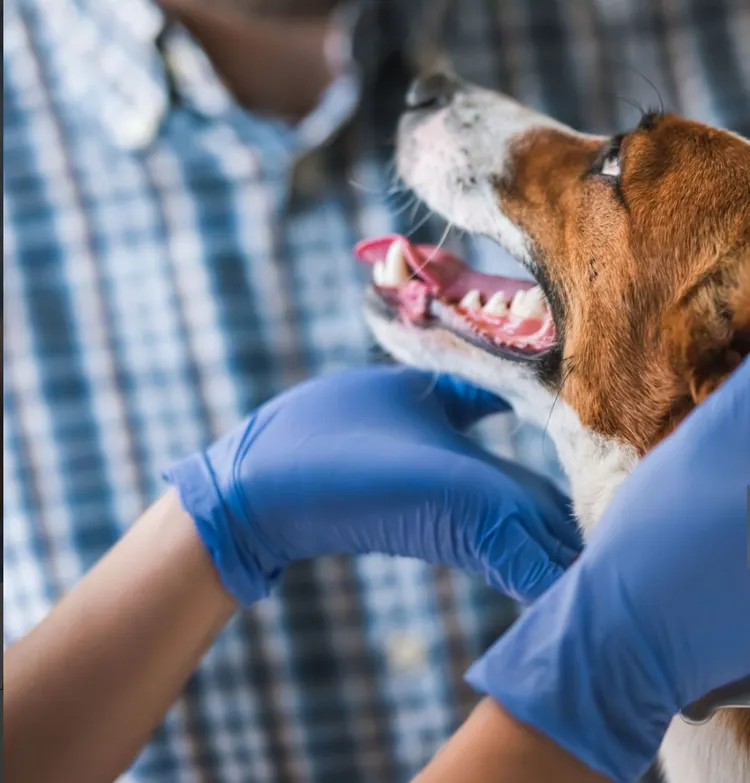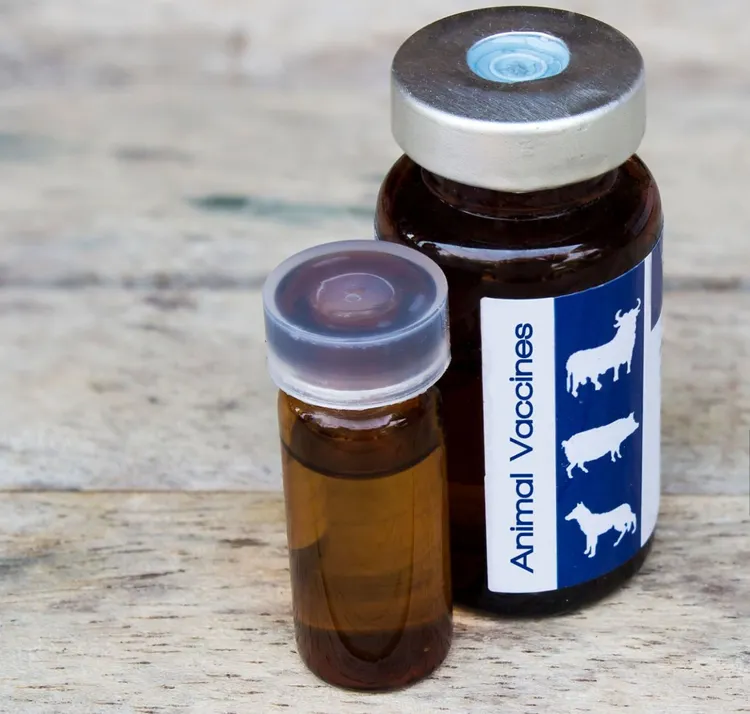Keeping fleas at bay is crucial for your dog’s comfort and health. But what if we told you there’s more to flea prevention than just shampoos and collars? In this post, we’ll explore whether vaccines for dog fleas exist and dive into sustainable, eco-friendly ways to keep your furry friend flea-free while reducing environmental impact.
1. Do Vaccines for Dog Fleas Exist?
Current Research on Flea Vaccines
As of now, no flea vaccines for dogs have been developed or approved for use. Vaccines typically work by stimulating the immune system to recognize and fight off specific pathogens, like bacteria or viruses. However, fleas are external parasites that don’t operate in the same way as infectious agents. Fleas bite the host and feed on their blood, but they don’t directly trigger an immune response in the same way bacteria or viruses do, making vaccine development particularly challenging.
Scientists are researching how flea biology could be leveraged to create novel flea control methods. One area of interest is disrupting the flea’s reproductive cycle or using the dog’s immune system to react to flea saliva in a way that prevents infestation. While this is still a long way from a commercial vaccine, advancements in this field could lead to promising solutions in the future.
Alternatives to Vaccines
Though no specific flea vaccine exists, there are several medical and preventative options currently available that are effective in controlling and preventing flea infestations. These include topical treatments, oral medications, flea collars, and more. Many of these treatments focus on either repelling fleas or killing them when they bite your dog, breaking the flea life cycle and reducing infestations.
2. Proven Flea Prevention Methods
While flea vaccines might not be a reality yet, there are several proven and eco-conscious flea prevention methods to keep your dog and home flea-free. Some are based on natural remedies, while others use medication or external treatments that are both effective and environmentally friendly.
Topical Treatments
Topical flea treatments remain one of the most common forms of flea prevention. These treatments are typically applied to the back of your dog’s neck and work by spreading the active ingredients through your dog’s skin, which kills fleas on contact.
For eco-conscious pet owners, consider using eco-friendly flea repellents made from natural ingredients like neem oil, citronella, or peppermint oil. Many pet-safe products use essential oils to repel fleas while avoiding harmful chemicals that may damage the environment or your dog’s health.
Oral Medications
Oral flea medications are another effective option. These prescription tablets work by entering the dog’s bloodstream and killing fleas when they bite the dog. Flea control medications like NexGard or Bravecto are commonly prescribed by veterinarians and can last up to three months.
While these medications are highly effective, pet owners seeking eco-friendly flea control should be mindful of the potential environmental impact of chemical runoff. Though these medications act within the pet’s body, the production and disposal of pharmaceuticals can have ecological consequences. It’s always best to consult your vet to discuss options that align with your values.
Collars and Shampoos
Flea collars are a popular option for long-lasting flea prevention. Look for collars that use biodegradable and non-toxic materials. Some collars are made with natural ingredients like cedarwood and eucalyptus, which repel fleas without harming your dog or the environment.
Flea shampoos are another go-to treatment for infestations. However, many traditional flea shampoos contain chemicals that can be harmful to ecosystems when washed down the drain. Instead, use biodegradable shampoos made from plant-based ingredients, such as aloe vera or oatmeal, to reduce the environmental impact while keeping your dog clean and flea-free.

3. Eco-Friendly Flea Control Tips
In addition to treatments, incorporating eco-friendly flea control practices into your daily routine can help prevent infestations without harming the environment. Here are some sustainable strategies to consider:
Home Remedies
There are several natural flea control remedies that can be used around the house to repel fleas.
- Baking Soda: Sprinkle baking soda on your carpets and furniture, then vacuum it up to remove flea eggs and larvae. It’s an effective and non-toxic method for indoor flea control.
- Diatomaceous Earth: This fine, powdery substance is made from fossilized algae and is safe for both pets and humans. Sprinkling diatomaceous earth on your pet’s bedding and around your home can help kill fleas by drying them out.
- Lemon Sprays: Fleas dislike the scent of citrus, making lemon-based sprays a great natural alternative. You can make a simple flea repellent by boiling a lemon in water, allowing it to cool, and then spraying it on your dog’s coat.
Outdoor Solutions
Flea prevention isn’t just about treating your dog—it’s also important to control fleas in your environment. There are several eco-friendly ways to manage fleas outdoors:
- Plant flea-repelling herbs like lavender, rosemary, mint, and chamomile in your yard. These plants naturally repel fleas and other pests while adding beauty to your outdoor space.
- Nematodes, a type of microscopic worm, can be introduced into your soil to kill fleas in their larvae stage. This biological method is safe, natural, and doesn’t harm beneficial insects or wildlife.
Proper Cleaning Practices
One of the simplest ways to prevent flea infestations is through regular cleaning. Wash your dog’s bedding, toys, and any fabrics they frequently contact, such as furniture covers, in hot water using natural detergents. This will help eliminate fleas, eggs, and larvae that may be hiding in fabrics.
Additionally, vacuum your home frequently, paying close attention to carpets and upholstered furniture. Vacuuming is an effective way to remove flea eggs and larvae, preventing an infestation from getting out of control.
4. Flea-Related Health Issues in Dogs
Flea infestations can lead to several health issues in dogs, some of which may require medical attention.
Flea Allergy Dermatitis (FAD)
Many dogs are allergic to flea saliva, which can cause Flea Allergy Dermatitis (FAD). This allergic reaction leads to intense itching, red skin, and hair loss, especially in areas where fleas typically bite, such as the lower back, thighs, and tail base. Treating FAD often involves both flea control and soothing irritated skin using natural, anti-inflammatory solutions like aloe vera gel or calendula cream.
Other Complications
Fleas can also transmit other parasites, including tapeworms. Dogs can ingest flea larvae carrying tapeworms when grooming themselves, leading to an internal parasitic infection. Symptoms of tapeworms include weight loss, vomiting, and visible segments of the parasite in the dog’s stool.
In severe infestations, dogs can also develop anemia due to blood loss from flea bites. If your dog is showing signs of weakness, pale gums, or lethargy, consult your veterinarian.
When to Consult a Vet
If your dog is experiencing persistent flea infestations or showing signs of severe allergic reactions or other flea-related complications, it’s time to consult your vet. They can recommend appropriate treatments or suggest prescription options to help keep your dog flea-free and healthy.

While vaccines for dog fleas don’t exist yet, there are many effective ways to prevent flea infestations using natural, eco-friendly, and sustainable solutions. From eco-conscious topical treatments and oral medications to home remedies like diatomaceous earth and flea-repelling plants, you have plenty of options to keep fleas at bay while reducing your environmental footprint. By combining regular cleaning practices with mindful, eco-friendly flea control strategies, you can ensure your dog remains comfortable and healthy without harming the planet.



